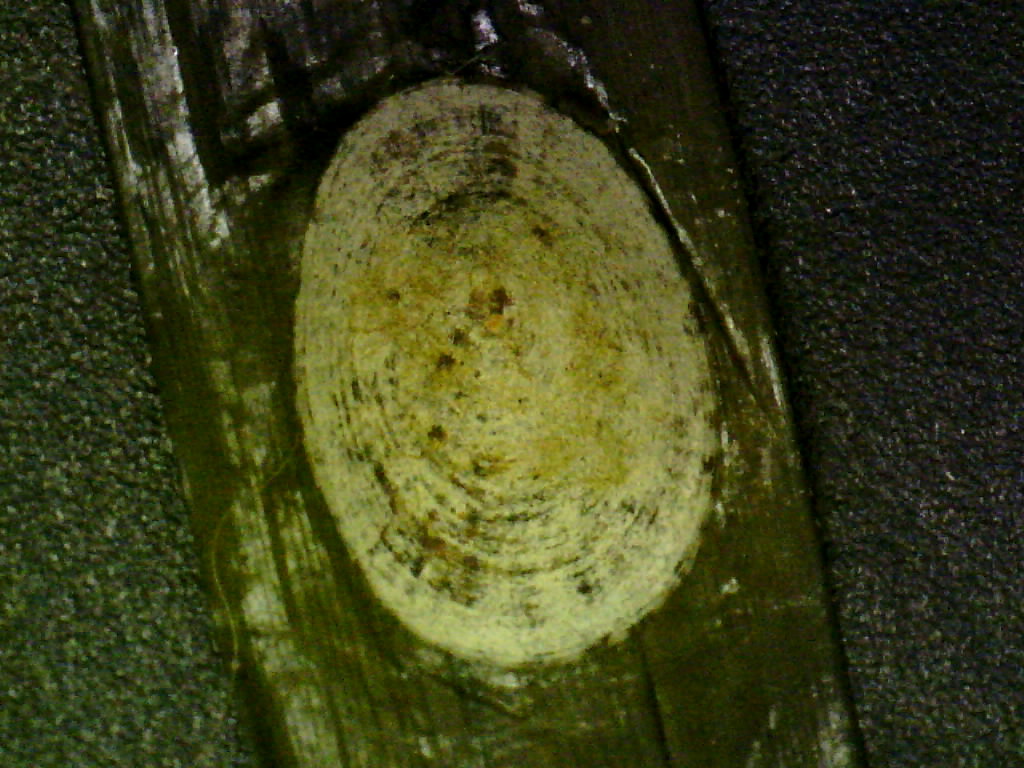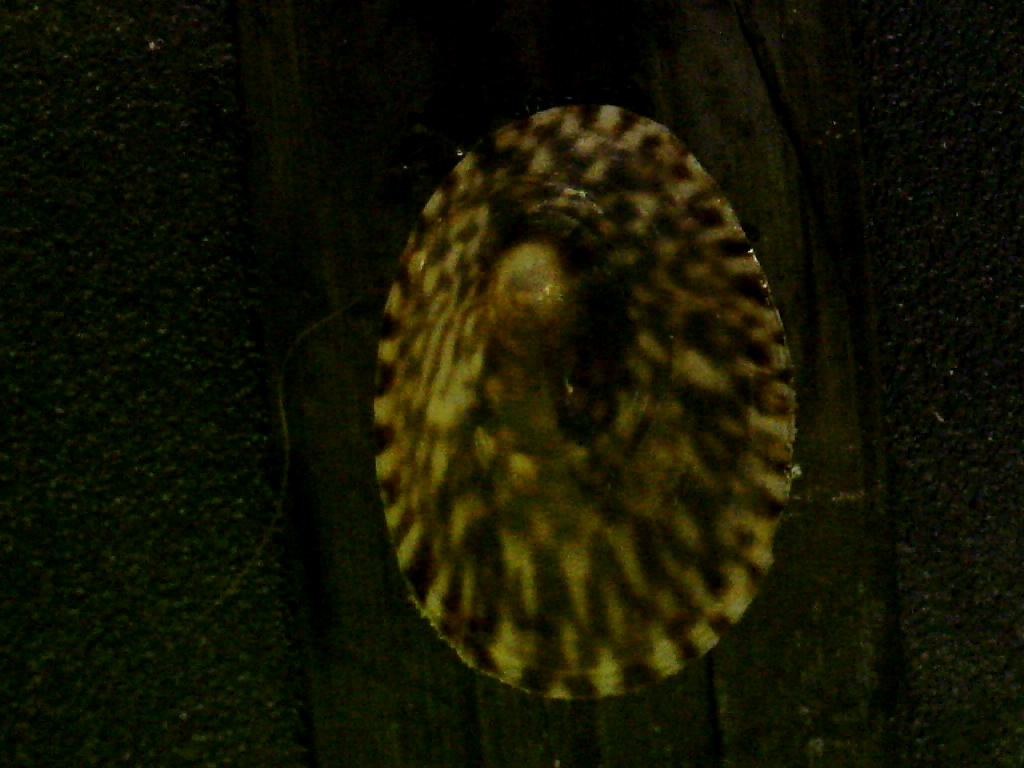Description: This small limpet has an apex as the highest point of the shell. The left and right margins of the shell are mildly parallel (mostly a slightly elongated oval in this individual). The relatively thin shell is brownish on the outside, has numerous internal dark markings in a checkerboard pattern; these are easily seen from the inside, which also may be bluish and has a brown apical stain. The shell margins are evenly aligned so the shell does not 'rock' when placed on a flat surface. Usually found on Zostera marina eelgrass leaves. Generally not more than 1.2 cm long and less than 2x as long as wide.
How to Distinguish from Similar Species:Discurria insessa is darker brown and lives on the stipes of Egregia algae. Lottia instabilis lives on laminarian stipes and rocks when on a flat surface.
Geographical Range: Southern Alaska to California; not likely to be found south of Washington.
Depth Range: Since it lives on eelgrass, it must be low intertidal and shallow subtidal.
Habitat: Lives on the blades of eelgrass in quiet waters.
Biology/Natural History:
An Atlantic
subspecies, L.
alveus alveus,
is now extinct. This variety may be L.
alveus paralella, though the right and left sides of this
individual
are not very parallel.
| Return to: | |||
| Main Page | Alphabetic Index | Systematic Index | Glossary |
References:
Dichotomous Keys:Kozloff, 1987, 1996
General References:
Harbo,
1999
Lamb
and Hanby, 2005
Scientific Articles:
Web sites:
General Notes and Observations: Locations, abundances, unusual behaviors:
Limpets of this type were common on the eelgrass in south Padilla Bay in the summer of 2015. I don't remember seeing these much there before.
This view of the inside of the shell shows the very clear
checkerboard
pattern and the darker blotch near the apex. The shell is
partly
translucent.
Authors and Editors of
Page:
Dave Cowles (2015): Created original page
CSS coding for page developed by Jonathan Cowles (2007)
Salish Sea Invertebrates web site provided courtesy of Walla
Walla University

